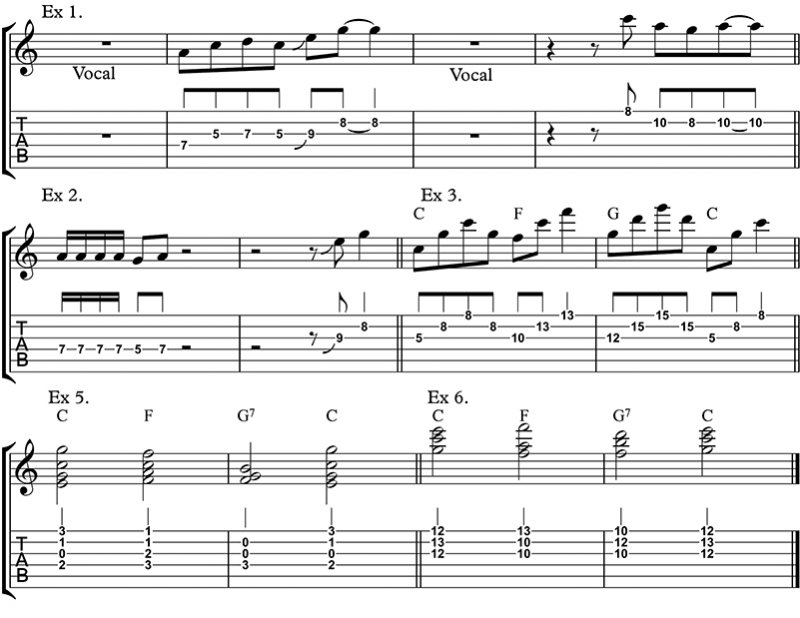Guitar Cool: The Lead Guitar Player’s Role
Guitar Cool: The Lead Guitar Player’s Role
In the last issue I wrote about the role of the rhythm guitarist, so this month I will give you some cool ideas to use when you are in the lead guitar role.
Essentially a good guitar player can play a rhythm or lead role with ease depending on what is required for the gig or jam session. Sometimes you are the only guitarist in the band so you need to do a bit of both, but if you have another guitar or keyboard player then you might find you are more in the lead guitar role.
For this role, you must think very differently to what was discussed in the rhythm guitar role last month. If you missed it, you can see the rhythm guitar lesson here.
Play less, and what you play needs to compliment the song. Stay out of other instruments’ sonic space and create different parts to what the others are doing.
In a nutshell, staying out of the other instruments’ sonic space means not playing in the same octave range as the others. For example, if a keyboard is playing chords quite low, then you need to think maybe in the mid or higher ranges of your guitar.
Playing less can mean a lot of things, but here are a few. Don’t play six string chords, cut them down to two or three strings. Strum less vigorously or maybe only play one strum per bar. Play fewer notes in your licks and/or play longer notes in your licks. There are many more, too numerous to mention here.
Creating different parts to complement the others in the band is a lot of fun and can really stretch your imagination. I recommend listening to all the parts you hear on some of your favourite recordings to get some ideas.
One idea is not to play anything at all – otherwise called a ’tacit’. You quite often hear the lead guitar on recordings not playing anything, especially on Verse 1 or Verse 3.
Another cool thing is to play some simple licks in between the vocals, as can be seen in Excercise 1. The idea here is to keep things very simple with no show off stuff, otherwise, the vocalist won’t be happy with you.
Excercise 2 is a bubble part. Quite often the rhythm player is playing a palm-muted lower bubble part as in bar one, so you could add to it by playing a simpler higher one played without the mute as in bar two. Having two different sounds on each guitar really makes this type of part come alive. If there is no bubble part in the song you could play both bars.
Having two different sounds on each guitar really makes this type of part come alive. If there is no bubble part in the song you could play both bars.
If your rhythm player is playing power chords on the lower strings, you can play power chords on the higher strings. Power chords on the higher strings sound great if played as arpeggios broken up rhythmically and with a bit of delay, as in Exercise 3.
Playing triads (or double stops) higher up the neck to what the other guitar or keyboard is playing is also a great idea. If one guitar is playing power chords on the 5th and 6th strings then triads like those in Excercise 5 will come in handy and complement what the power chord part is doing. They could be played strummed, arpeggio style, etc.
Exercise 5 will come in handy and complement what the power chord part is doing. They could be played strummed, arpeggio style, etc.
If the other guitar is playing a triad part like that of Exercise 5 then you could play a part higher up the neck, like that of Example 6. Again, arpeggios broken up rhythmically sound great with this type of part.
Of course, there are many other parts you will hear, but these six different lead guitar parts might just transform your thinking and playing, and they are all very easy to do with a bit of practice. Over the next few months keep your ears open to see if you can hear these parts in your favourite songs. If you have trouble with any of this, it might pay to see a good guitar teacher.
Kevin Downing is a professional guitarist, teacher and author. His contact details, along with many other articles and freebies, are on his website at www.guitar.co.nz.

